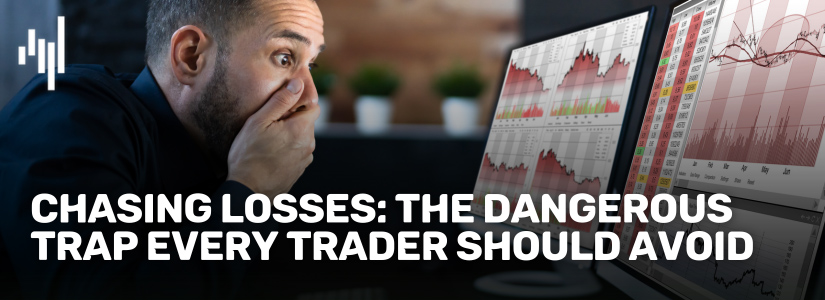Did you know that even the best day traders can make mistakes that would make a cat in a room full of rocking chairs look graceful? In the fast-paced world of day trading, common pitfalls can significantly elevate your risk and lead to costly losses. This article delves into the most frequent errors traders make, such as overtrading, poor risk management, and the dangers of emotional decision-making. We’ll explore how impatience and a lack of a trading plan can derail your strategy, while ignoring market trends and using excessive leverage can amplify risks. Additionally, we’ll address the importance of setting stop-loss orders and maintaining consistent trading discipline. If you're looking to refine your trading approach, understanding these mistakes is crucial. Let DayTradingBusiness guide you through the intricacies of successful trading and risk management.
What are the most common day trading mistakes that lead to losses?
Common day trading mistakes that increase risk include overtrading, risking too much on single trades, ignoring a solid trading plan, chasing losses, and not using stop-loss orders. Traders often get emotional, making impulsive decisions instead of sticking to their strategies. Poor risk management, like not limiting position sizes, also heightens the chance of big losses. Failing to stay informed about market conditions and ignoring key indicators can lead to bad trades.
How does overtrading increase risk in day trading?
Overtrading increases risk by exposing you to more market fluctuations and emotional exhaustion. It leads to bigger losses as you make too many trades without proper analysis. Overtrading often results in poor decision-making, increasing the chance of impulsive errors. It also drains your capital faster, reducing your ability to manage trades effectively.
Why is poor risk management a major mistake in day trading?
Poor risk management in day trading leads to big losses because it fails to protect your capital during volatile swings. Without proper stop-loss orders and position sizing, a sudden market move can wipe out your account. It increases the likelihood of emotional trading and chasing losses, making mistakes worse. Effective risk management keeps losses small and preserves capital for future trades.
How can impatience hurt your day trading success?
Impatience leads to rushed decisions, causing you to enter trades without proper analysis. It increases the chance of chasing quick profits, which often results in bigger losses. Impatient traders can hold onto losing positions too long, hoping for a rebound, instead of cutting losses early. This mindset fuels emotional trading, making you less disciplined and more prone to mistakes. Overall, impatience undermines your risk management, making your day trading riskier and less consistent.
What impact does lack of a trading plan have on risk?
Lack of a trading plan increases risk by causing impulsive decisions, poor risk management, and inconsistent strategies, leading to bigger losses and missed opportunities. Without clear rules, traders react emotionally to market swings, amplifying potential damage.
Why is ignoring market trends dangerous for day traders?
Ignoring market trends is dangerous for day traders because it leads to poor timing and bad decisions. Without understanding the trend, traders buy high and sell low, increasing losses. Missing trend signals also causes missed opportunities or entering trades against the overall market direction. This mistake amplifies risk, making it harder to protect capital and achieve consistent profits.
How does using too much leverage increase trading risks?
Using too much leverage amplifies trading risks by magnifying losses if the market moves against you. It can quickly wipe out your capital with small unfavorable price swings. High leverage reduces your margin for error, making every bad trade more damaging. When markets are volatile, leverage can turn minor dips into significant financial hits, increasing the chance of margin calls or forced liquidations. It’s like betting more than you can afford—your losses grow exponentially, risking your entire account.
What are the risks of not setting stop-loss orders?
Not setting stop-loss orders exposes you to unlimited losses if the market moves against you. Without them, a sudden price drop can wipe out your entire position, risking significant capital. It also leads to emotional trading, causing you to hold onto losing trades longer, which amplifies risk. Missing stop-losses increases the chance of large, unexpected losses and reduces your ability to control risk effectively.
How does emotional trading raise the chances of losses?
Emotional trading leads to impulsive decisions, ignoring market analysis. This rush often results in poor entries and exits, increasing losses. When fear or greed take over, traders stay in losing positions or chase quick profits. Emotional reactions cause inconsistent strategies, making losses more likely. Instead of sticking to a plan, traders react to short-term swings, magnifying risks.
Why is inconsistent trading discipline harmful?
Inconsistent trading discipline leads to impulsive decisions, risking larger losses and eroding capital. Without a set plan, traders chase wins or try to recover losses, often abandoning their strategies. This chaos causes emotional trading, increasing mistakes and reducing the ability to stick to risk management. Over time, it damages confidence and makes consistent profits nearly impossible.
How can chasing losses escalate risks in day trading?

Chasing losses in day trading leads to bigger, impulsive bets to recover money, often ignoring market signals. This behavior can cause traders to overleverage, increasing the chance of large, unexpected losses. It fuels emotional decision-making, making traders more likely to ignore their trading plan. As losses pile up, traders may take reckless trades just to break even, risking their capital and spiraling into bigger financial trouble.
Learn about How does chasing losses escalate risk in day trading?
What mistakes are made by failing to analyze market data properly?
Failing to analyze market data properly leads to bad timing, misjudging trend reversals, and ignoring key signals. It can cause overtrading, chasing false moves, and missing critical support or resistance levels. Without proper analysis, traders make impulsive decisions, increase exposure to volatility, and overlook potential risks. This often results in bigger losses and missed opportunities for profit.
How does neglecting to review past trades increase future risks?
Neglecting to review past trades prevents learning from mistakes, leading to repeated errors. It hides patterns of bad habits, causing traders to make impulsive or poor decisions. Without analysis, traders miss warning signs of overconfidence or risky behavior. This oversight increases the chance of bigger losses and hampers risk management. Ignoring past trades keeps traders from adjusting strategies, making them more vulnerable to market swings.
Why is poor timing a costly mistake in day trading?
Poor timing in day trading leads to costly mistakes because it causes you to buy high and sell low, missing optimal entry and exit points. It can result in holding onto losers too long or exiting winners too early, amplifying losses or limiting gains. Bad timing also exposes you to sudden market reversals, increasing the risk of large, unnecessary losses. Accurate timing is crucial for managing risk and maximizing profit in fast-paced trading environments.
Learn about How does poor timing amplify risk in day trading?
How does trading without a clear strategy increase danger?
Trading without a clear strategy leads to impulsive decisions, magnifying losses during volatile market swings. Without defined entry and exit points, traders chase trends blindly, increasing exposure to unpredictable moves. Lack of a plan also causes overtrading and poor risk management, making it harder to limit losses. This chaotic approach often results in emotional trades, which escalate risk and undermine consistent profitability.
Conclusion about What are the common day trading mistakes that increase risk?

In summary, avoiding common day trading mistakes is crucial for managing risk and achieving success. Overtrading, poor risk management, impatience, and lack of a solid trading plan can lead to significant losses. Ignoring market trends, using excessive leverage, and emotional trading further complicate your strategy. Consistency and careful analysis of market data are vital, along with regular trade reviews to enhance future performance. For those looking to refine their approach, DayTradingBusiness offers invaluable insights and resources to help navigate these challenges effectively.
Learn about Common mistakes that increase stop-loss risk in day trading
Sources:
- Gambling and online trading: emerging risks of real-time stock and ...
- Market Liquidity after the Financial Crisis
- IPO pricing as a function of your investment banks' past mistakes ...
- The price effects of liquidity shocks: A study of the SEC's tick size ...
- Artificial intelligence and systemic risk - ScienceDirect